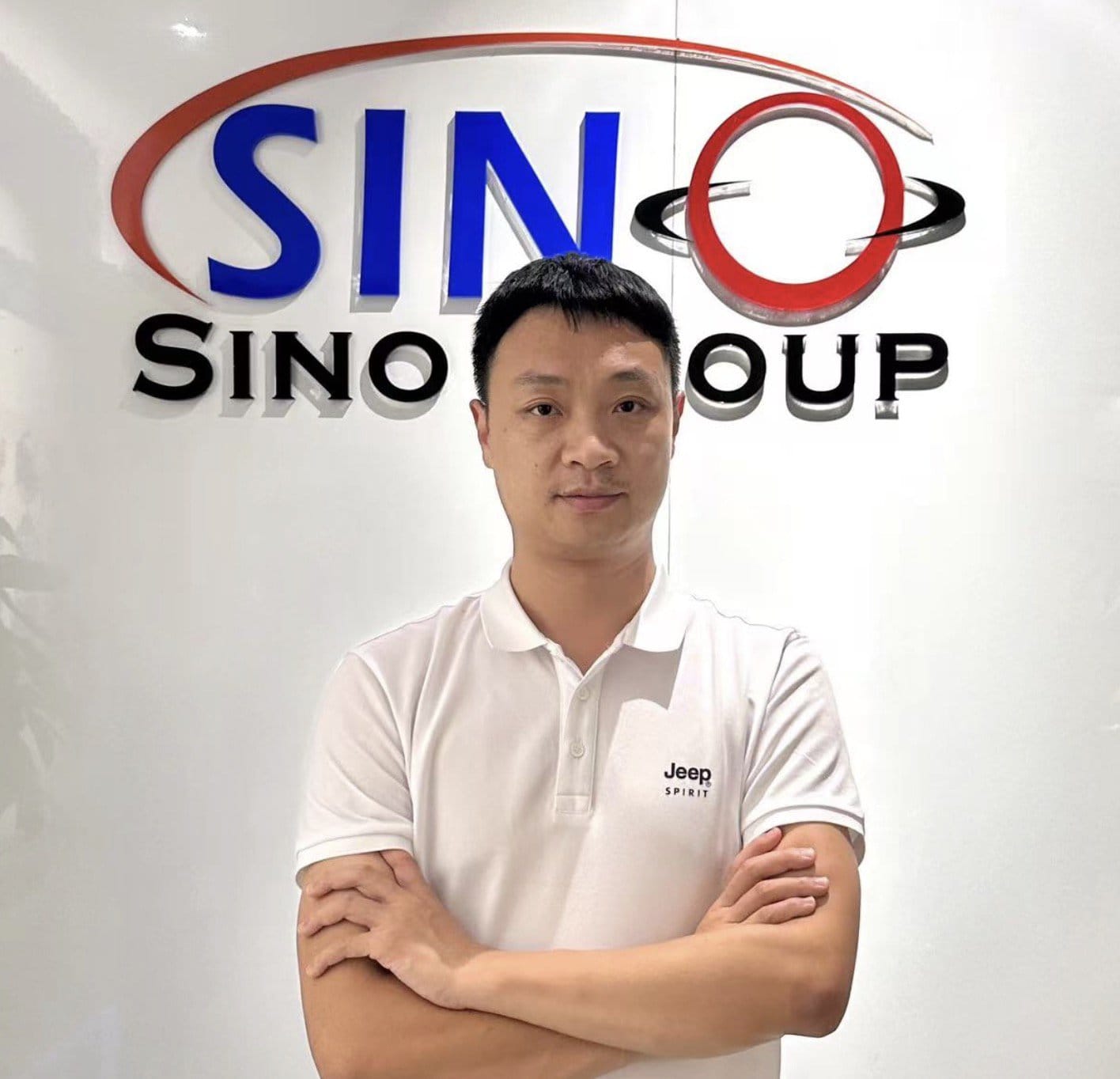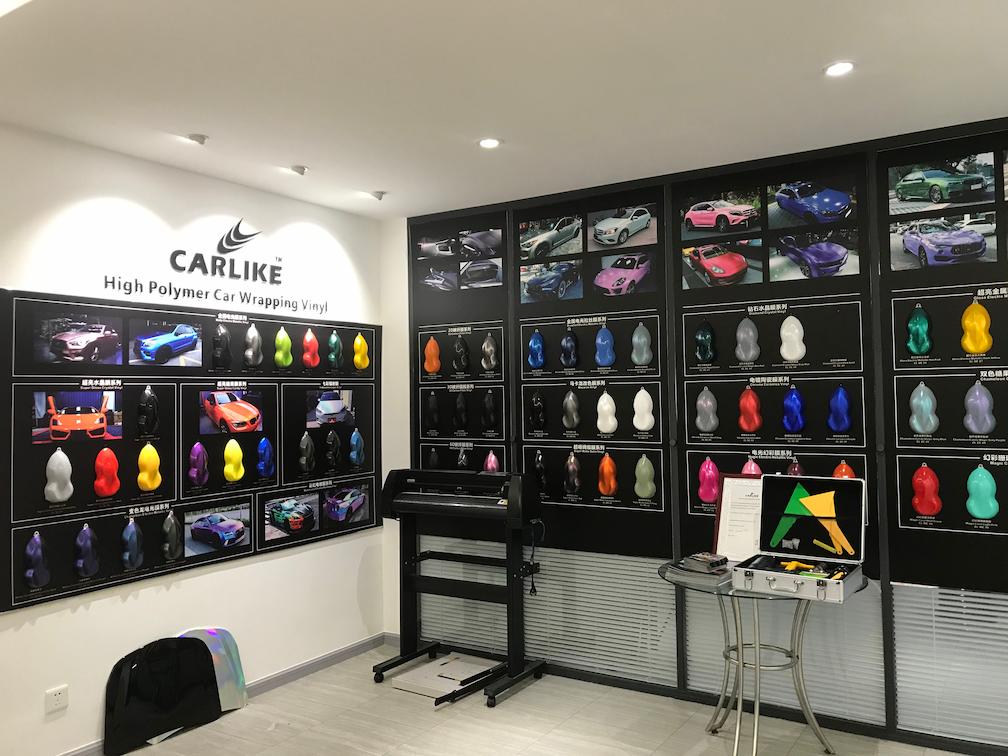Keep your car looking showroom-fresh for years! Discover how ceramic coating delivers a brilliant shine, while PPF provides unbeatable protection against chips and scratches. This post compares their key differences, costs, performance, and durability so you can choose the ultimate protection for your car. Time to armor up your ride? Discover your ideal protection now!
What is Paint Protection Film (PPF)?
Paint protection film (PPF) is a transparent, urethane-based film designed to serve as a defense for your car’s exterior against external damage. Popularly referred to as Clear Bra because it is a see-through physical barrier for your car against UV exposure, bird poop, minor scratches, and rock chips.
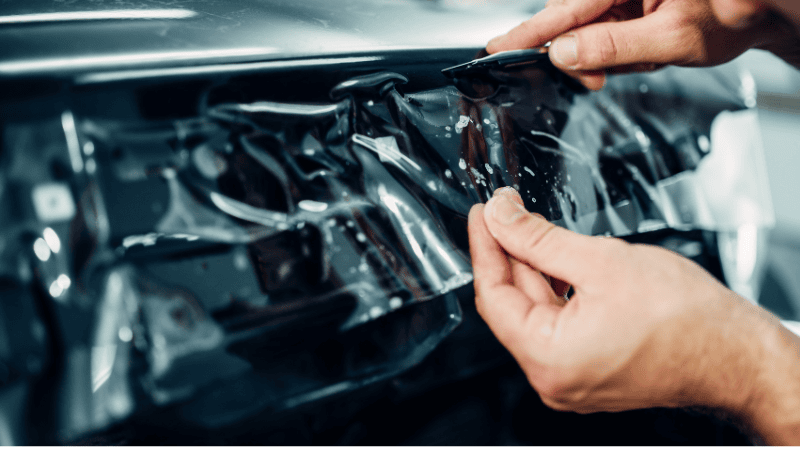
Paint Protection Film is the perfect choice if your goal is to protect your car’s exterior while letting the world see its beauty. Even better, features like self-healing capabilities that help the film recover from minor scratches make it an attractive option.
In addition, it is a durable material that can last up to a decade with appropriate maintenance. This durability also makes PPF suitable for high-mileage vehicles or those exposed to rough road conditions.
As an icing on the cake, modern PPF products are available in various finishes, including gloss and matte, allowing car owners to personalize the appearance of their vehicles while protecting them. CARLIKE® also provides colored PPF for you to customize your car.
What is Ceramic Coating?
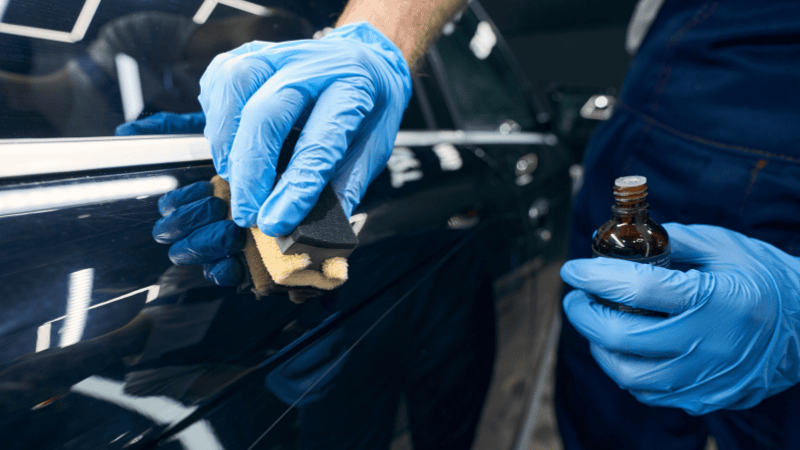
Ceramic coating is a liquid polymer that forms a tough, protective layer on your car’s paint job. It bonds with the surface to shield it from daily wear and tear caused by road debris, swirl marks, chemical damage, and UV rays while giving your car a shiny, polished look.
While the ceramic coating usually does not protect against physical damage like scratches, it excels at sustaining your car’s aesthetics and reducing maintenance efforts. Unlike wax or sealants, ceramic coating offers a long-lasting solution to chemical damage caused by bird droppings, chemical stains, and mineral deposits.
Ceramic coating has a hydrophobic nature, which repels water and makes it easy to clean. Additionally, it has a wide use as it can be applied to other parts of a car’s body, from the wheels to the glass, ensuring comprehensive protection for the whole car.
Key Differences Between PPF and Ceramic Coatings
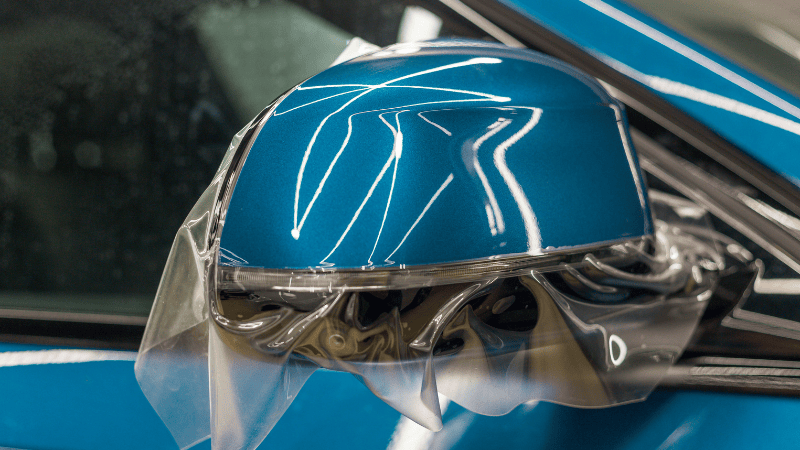
When deciding between Paint Protection Film and ceramic coatings, it is important to understand how they differ in terms of protection, appearance, and cost. Here is a breakdown of the key differences:
| Feature | Paint Protection Film (PPF) | Ceramic Coating |
|---|---|---|
| Protection Level | Acts as a physical shield against scratches, chips, and abrasions. | Bonds chemically to protect against UV rays, oxidation, and minor blemishes. |
| Hydrophobic Properties | Basic water resistance, but not inherently hydrophobic. | High hydrophobicity, repelling water and dirt for easy cleaning. |
| Gloss Enhancement | Moderate; retains the car’s original paint look. | High; enhances shine and provides a glossy, polished finish. |
| Durability | Lasts 7-10 years with proper care. | Typically lasts 2-5 years with maintenance. |
| Cost Range | Higher, ranging from $500 to $5,000, depending on coverage. | Moderate, costing $500 to $2,000. |
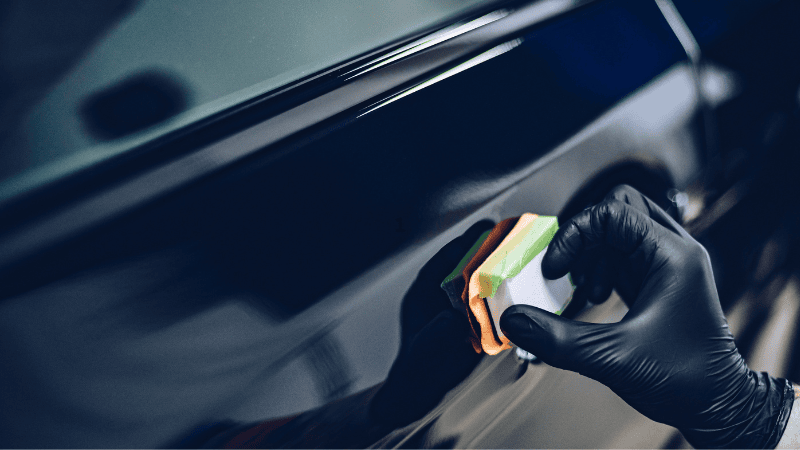
The table above provides a snapshot of the fundamental differences between the two options. Understanding these distinctions is the first step for many users in deciding which protection method best aligns with their priorities. Below, we will examine specific performance attributes to guide you further.
Performance Comparison
Impact Resistance
- Paint protection film: Offers superior protection against physical damage, including rock chips and abrasions. It is especially beneficial for cars frequently driven on highways or gravel roads, where environmental hazards and road debris are common issues. Therefore, investing in PPF for commercial fleets is a great way to prevent these issues and save costs in the long term.
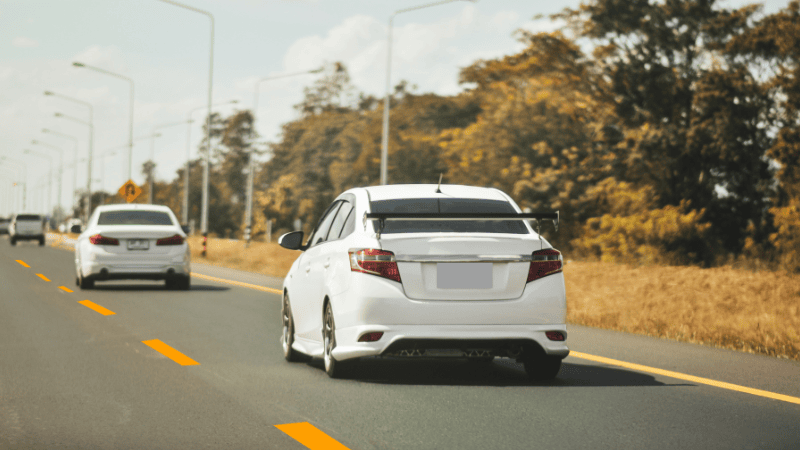
- Ceramic Coating: Lacks impact resistance but prevents minor surface blemishes like swirl marks. While it won’t shield against significant damage, its protective layer can reduce small scratches caused during regular washing or detailing.
Hydrophobicity
- Paint protection film: As a film on the car’s body, it provides reasonable water resistance but isn’t inherently hydrophobic. However, some manufacturers now offer hydrophobic PPFs that combine physical protection with water-repellent properties.
- Ceramic Coating: Getting your car ceramic-coated creates a highly water-repellent surface, making washing easier. This feature is particularly beneficial for car owners in areas with frequent rain or high levels of environmental pollutants.
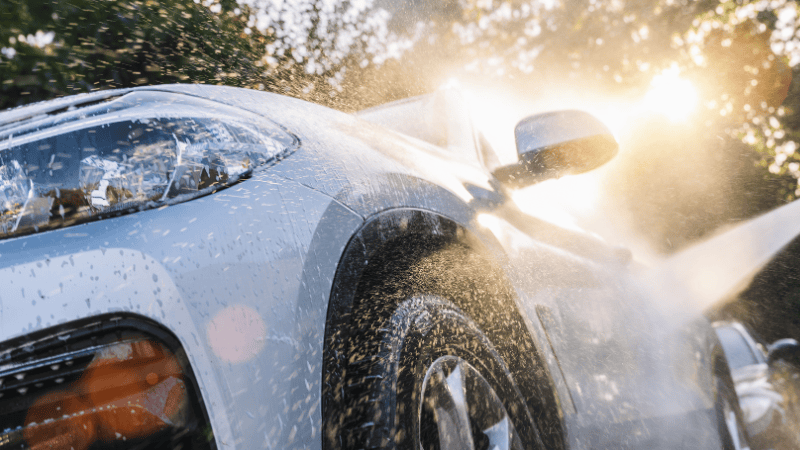
UV Protection
- Paint protection film: Shields paint, but may turn yellow over time with excessive UV exposure. High-quality PPFs now include UV inhibitors to combat this issue, ensuring long-term clarity and effectiveness.
- Ceramic Coating: Prevents paint oxidation and maintains color vibrancy. Its superior UV resistance makes it ideal for regions with intense sunlight. According to research, side door windows only block out 44% and 96% of UV-A rays.

Cost and Maintenance
With the various benefits both options provide, it is understandable to wonder how much protection costs. However, when it comes to cost and maintenance, both paint protection films and ceramic coats satisfy different budgets and are generally cheaper than traditional paint jobs. Here is a closer look:
Initial Cost
- Paint protection films: The cost of PPF can vary widely depending on how much of your car you want to protect. A full-body wrap can cost thousands of dollars, but it provides unparalleled protection. Partial wrap covers only specific areas, such as the hood and bumper. It is the go-to choice for basic protection film and currently costs $600 to $1500.
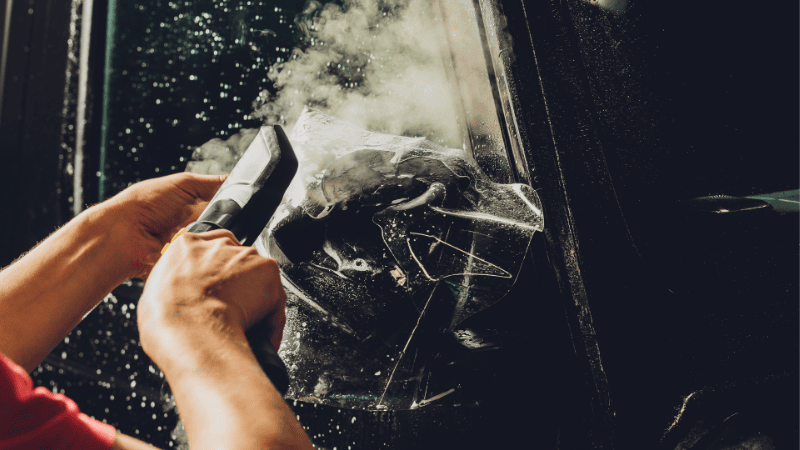
- Ceramic Coat: Ceramic coating is generally less expensive upfront, but still requires a professional application for the best results. DIY kits are an option for budget-conscious car owners, though they may lack the same longevity and quality.
Maintenance Requirements
- Paint protection films: PPF requires minimal upkeep but benefits from occasional inspections to ensure there are no peeling edges or damage. Minor tears or bubbles can often be repaired without replacing the entire film.

- Ceramic Coat: Maintaining ceramic coating is straightforward: regular washing and avoiding harmful chemicals are key. However, reapplication is necessary every few years to maintain its protective qualities.
Long-Term Value
- Paint protection films: The higher initial cost of PPF pays off for those seeking long-term durability and physical protection. It’s an investment that reduces the likelihood of costly paint repairs down the line. Installing PPF on your commercial fleet helps you get good ROI and resale value by protecting the surfaces well.
- Ceramic Coat: Ceramic coating offers a balance between cost and performance, making it an excellent choice for enhancing appearance and simplifying maintenance without breaking the bank.

Longevity and Durability
For most car owners, whether DIY enthusiasts, detailing experts, or users on a tight budget, longevity is a major purchase consideration. Durability offers peace of mind and, in the long run, keeps the car paint protection in its original form and maintains the resale value. Here are some pointers to watch out for:
Paint Protection Film (PPF)
- Durability: PPF is engineered to last between 7 to 10 years, making it a long-term investment. Its chemical composition ensures that your car’s paint remains shielded from physical damage over an extended period.
- Care Requirements: While PPF is low-maintenance, if you are a daily driver, occasional inspections are necessary to ensure edges remain adhered to and damage hasn’t occurred. Any compromised areas can be repaired without replacing the entire film.
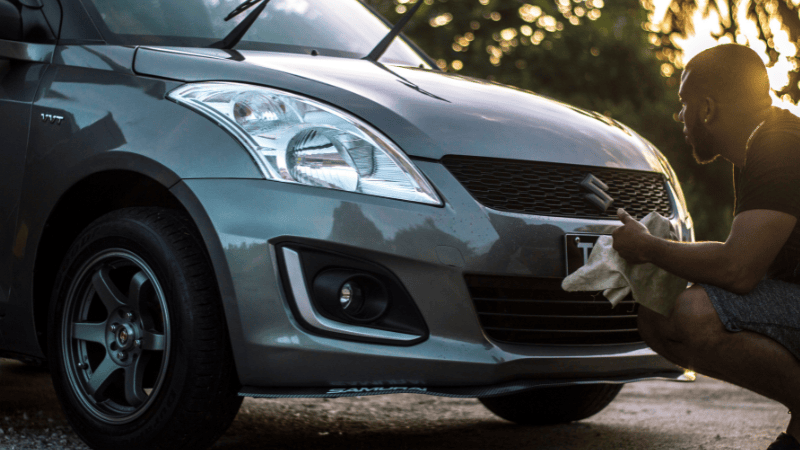
- Environmental Resistance: With proper care, PPF can withstand harsh weather, road debris, and minor abrasions. Advanced PPF products can self-heal and recover from small scratches and swirl marks, maintaining their pristine appearance.
Ceramic Coating
- Durability: While not as long-lasting as PPF, ceramic coatings provide effective car protection for 2 to 5 years. Premium ceramic coatings and consistent maintenance can stretch this lifespan further.
- Performance Over Time: Over the years, ceramic coatings gradually lose their hydrophobic properties. However, reapplying coatings can restore their effectiveness.
- Maintenance Needs: Regular washing and occasional touch-ups keep ceramic coatings looking their best. Unlike PPF, they don’t require inspections for peeling or physical damage.
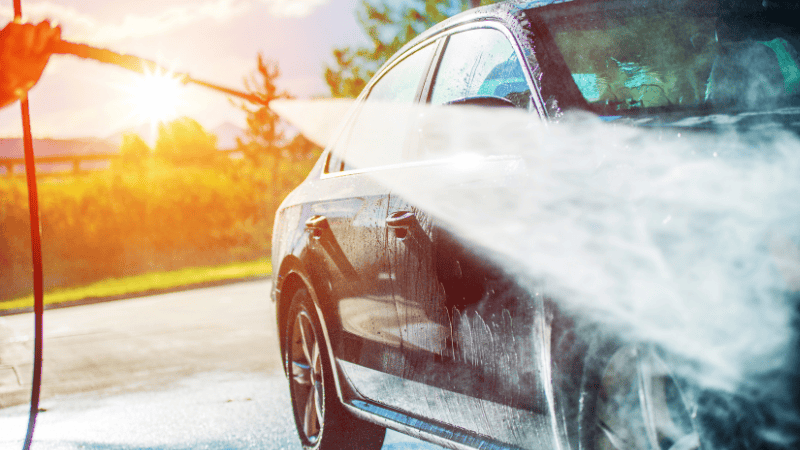
Choosing the Right Protection for Your Car
Selecting the right protection for your car ultimately comes down to your priorities, driving habits, personal preferences, and budget. Here’s how you can decide:
- Consider Your Aesthetic Goals: For car owners who prioritize a showroom shine, ceramic coating is unmatched. PPF, while offering some gloss, focuses more on protection than aesthetics.
- Assess Your Driving Environment: If you frequently drive on highways or gravel roads, PPF is a clear winner. It is built to handle physical impacts, making it ideal for protecting against rock chips, large scratches, and road debris. Conversely, if you mostly drive a luxury car in urban areas with fewer hazards, ceramic coating’s hydrophobic and aesthetic properties may suffice.
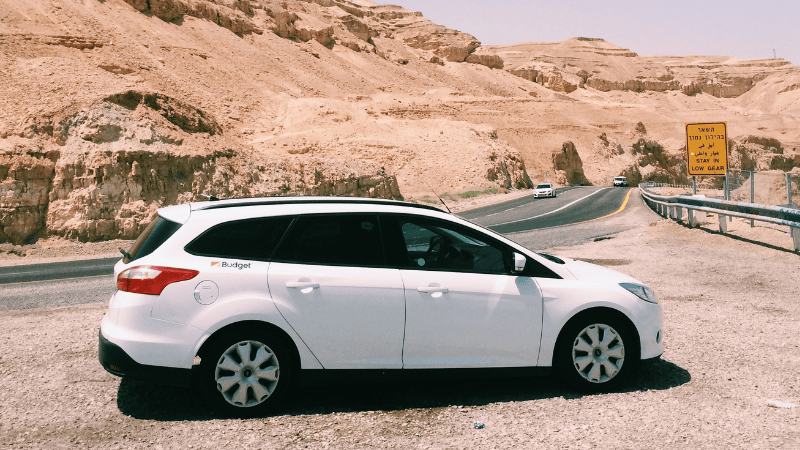
- Evaluate Your Budget: PPF generally requires a larger upfront investment but provides long-term durability. Ceramic coating, though more affordable initially, may require reapplication over time, which adds to the cost. If budget allows, combining the two can maximize both protection and aesthetics.
- Think About Maintenance Preferences: Ceramic coating simplifies cleaning and maintenance, ideal for busy car owners. PPF, on the other hand, requires periodic inspections to ensure it remains intact.
When to Choose Ceramic Coating
Ceramic coating is best suited for drivers and car owners who:
- Prioritize Aesthetics: Want their car to have a mirror-like shine and a glossy finish that turns heads.
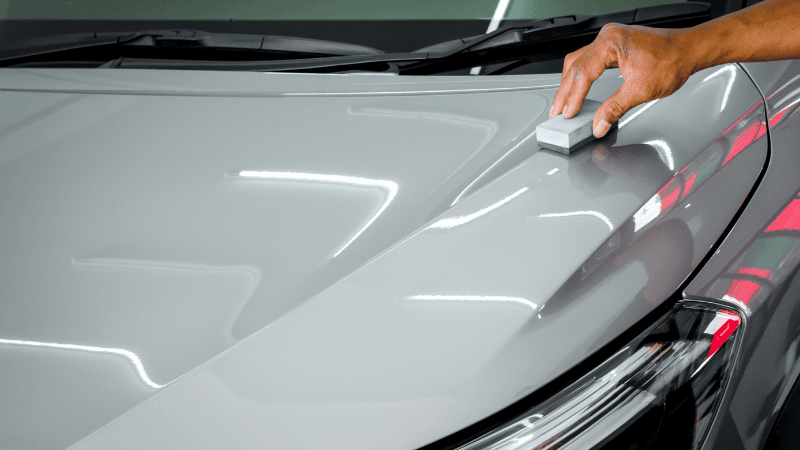
- Value Ease of Maintenance: Its hydrophobic properties make dirt, water, and grime slide off effortlessly.
- Drive Primarily in Urban Areas: Encounter minimal exposure to road hazards like gravel or harsh environmental conditions, reducing the need for physical damage protection.
- Have a Moderate Budget: Want an affordable yet effective way to maintain their car’s appearance?
When to Choose PPF
Paint Protection Film is ideal for those who:
- Drive in Challenging Conditions: Regularly face highways, gravel roads, or harsh weather that can threaten a car’s paintwork.
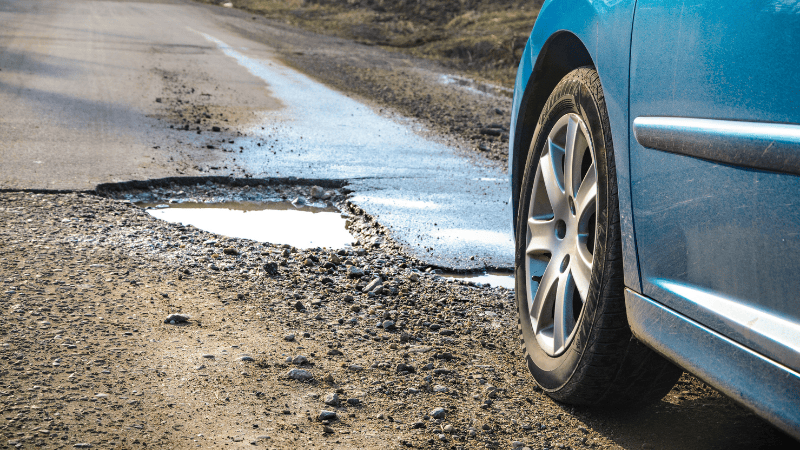
- Prioritize Maximum Protection: You need robust, long-lasting defense against physical damage, including rock chips, scratches, and abrasions.
- Want Long-Term Durability: Seek a solution that offers up to 10 years of dependable protection with minimal risk of wear and tear.
- Are Willing to Invest More Initially: Understand the higher upfront cost of PPF is justified by its longevity and superior protection.
- Own High-Value Vehicles: Have luxury or collector cars where maintaining pristine paintwork is critical to preserving their value.
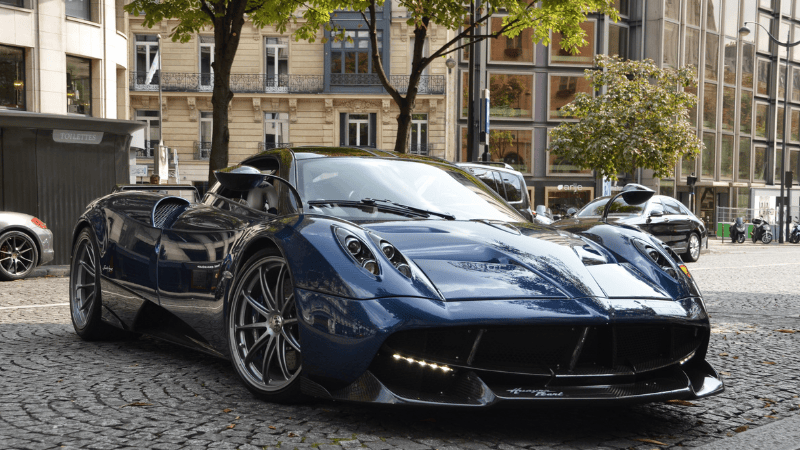
Can You Combine Ceramic Coating and PPF?
For car enthusiasts who want the best of both worlds, it is a powerful strategy to combine PPF and ceramic coating, which are both effective options to protect the car’s paint. This approach leverages the strengths of each solution:
- PPF for High-Impact Areas: Apply PPF to vulnerable areas like the front bumper, hood, and side mirrors to guard against physical damage.
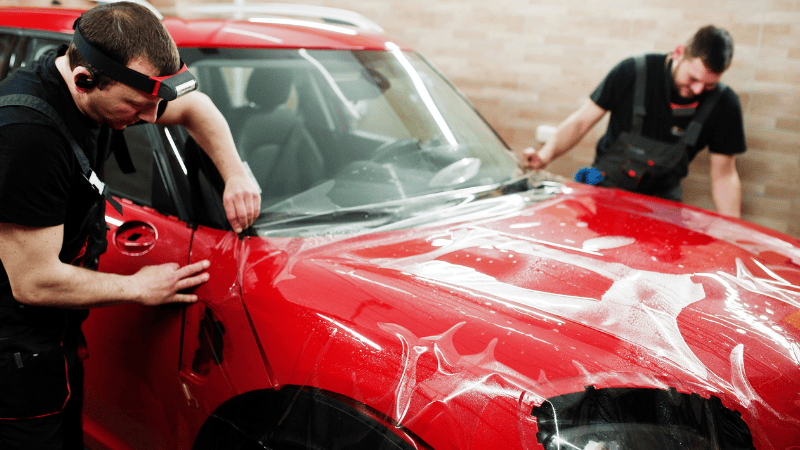
- Ceramic Coating for Overall Aesthetic: Add ceramic coating on other areas of the car to enhance hydrophobic features, make cleaning easier, and boost the vehicle’s shine.
This combination offers unmatched protection and visual appeal, making it a popular choice for car owners who demand excellence in both form and function.
Conclusion
Choosing the paint protection option for your car significantly affects its longevity and appearance. Ceramic coating has the benefits of glossy aesthetics and low maintenance, while PPF can provide rugged, long-term protection, keeping your car’s wonderful appearance. Make your choice based on your driving environment, aesthetic preferences, and budget. Ultimately, investing in car paint protection is undoubtedly a smart investment.
Ready to Protect Your Car Like a Pro? CARLIKE® Has You Covered!
You’ve done your research – now experience super protection with CARLIKE®’s premium PPF and vinyl wraps. CARLIKE® is China’s leading manufacturer in the business of providing top-of-the-line, durable PPF since 2008.
From premium paint protection films to car vinyl wraps, you can get a range of products from one place. Contact us now – our protection specialists are standing by to craft your perfect solution!
Share :

